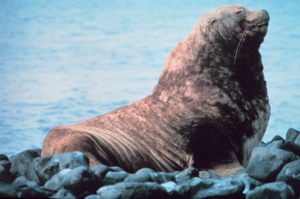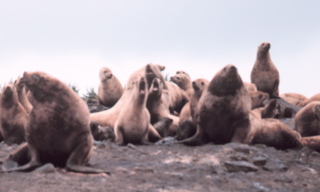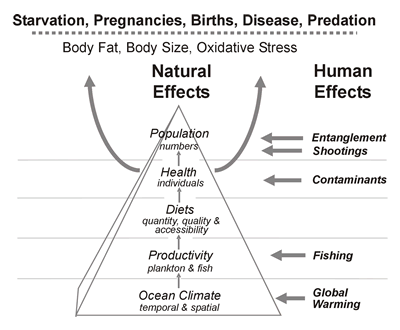Changing ocean conditions may explain the mysterious crash of Steller sea lions in Alaska, study says.

This new study rules out the conventional theories behind the decline in sea lion population like munching by killer whales, illegal kills or competition by fishermen, strange diseases or insidious poison.
Nearly 30 years ago, the North Pacific Ocean experienced an abrupt change in ocean conditions, which affect everything from sea-surface temperatures to fisheries. The effect of this 1976-77 climate change on marine ecosystems can still be felt.

The above picture shows Sea lions on Middleton Island in 1978.
According to a recent study by 30 leading scientists at the North Pacific Universities Marine Mammal Research Consortium, this single climate event may best explain the decline in western Alaska’s western stock of Steller sea lions. There has been a huge decline in population from 235,000 in the 1970s to the current regional population of about 40,000.
The sharp decline of the larger western population through the 1980s was mirrored by population growth in the smaller eastern populations in Southeast Alaska, British Columbia and Oregon.

The above model shows how sea lion numbers might be affected by ocean climate through bottom-up processes. This hypothesis suggests that water temperatures, ocean currents and other climatic factors determine the relative abundances of fish available to eat, which in turn affects sea lion health (proportion of body fat, rates of growth and at a cellular level – oxidative stress). These three primary measures of individual health ultimately determine pregnancy rates, birth rates, and death rates (through disease and predation). Also shown are the effects of human activities that could have directly or indirectly affected sea lion numbers.
How can a change in ocean climate is linked to the decline?
The nutritional stress hypothesis is a leading ‘best guess’ at why western Alaska’s sea lions have declined. The study found that climate change affected water temperatures and ocean currents determining the abundance of available fish for the sea lion’s to eat. Changes in prey led to a decline in the sea lion population. Climate change caused the creation of a new fish system around Alaska. The new fish system’s lower energy value has led to the dramatic fall in the area’s sea lion population. A young sea lion cannot hold and process enough low-quality food in its small stomach to satisfy its hunger, leaving it weaker and undernourished. Nutritional stress from low-quality prey also affects the reproductive health of adults, translating to lower birth rates.
Led by Andrew Trites, 30 authors contributed to ‘Bottom-up forcing and the decline of Steller sea lions (Eumetopias jubatus) in Alaska: assessing the ocean climate hypothesis,’ published in January by the journal Fisheries Oceanography.
The report “Conserving Alaska’s Oceans” by Natural Resources Consultants outlines 30 years of improved ocean conservation in the waters off Alaska with recommendations for future action. The report makes ten recommendations for continued improvement, including the need to address climate impacts, embrace the goals of ecosystem based fishery management, and the need to strengthen science programs to address future uncertainty.
While the National Marine Fisheries Service recognized the efficacy of the new research, officials are not willing to alter regulations to benefit the sea lions without further evidence.
Via: Science Daily
Image Courtesy: NOAA photo library

